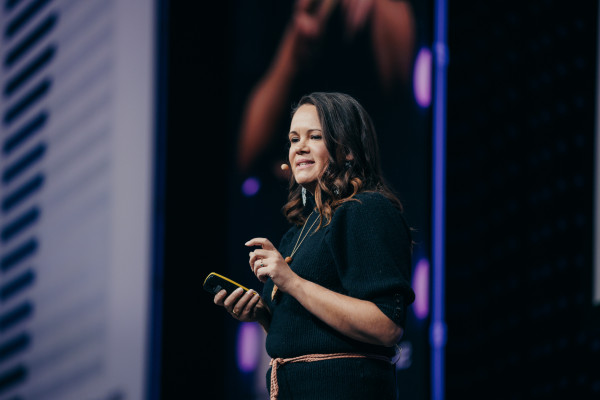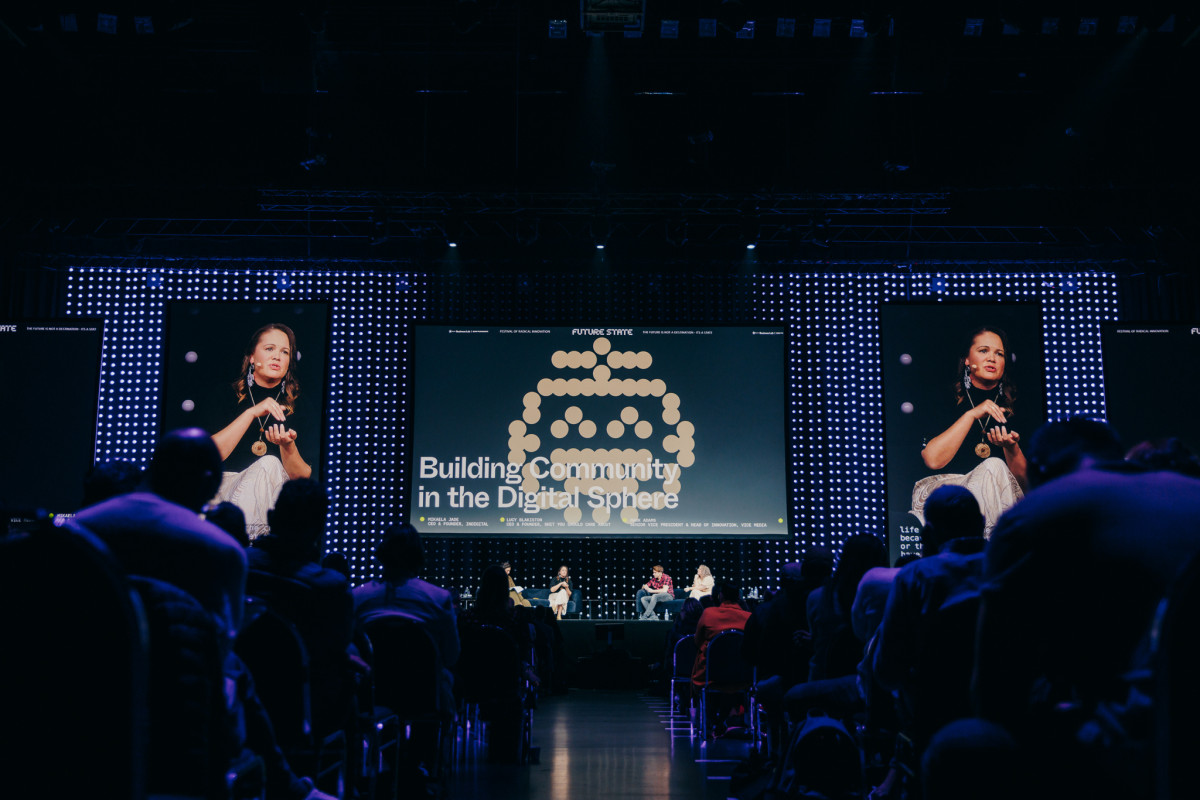Indigenous thought has a lot to offer future technologies, writes Daniel Smith.
Since the word was first coined by Mark Zuckerberg, the metaverse has largely been the domain of white billionaires.
Zuckerberg, Bezos, Gates. All proponents of a virtual future where you put on goggles and pretend to be some uncanny bobblehead version of yourself in work meetings.
Because these nerds also happen to be the oligarchical spearhead of the capitalistic system, I used to think the metaverse was the useless plaything of the ultra-rich tech class.
But watching Mikaela Jade, CEO and founder of indigenous tech company Indigital, explain her vision of the metaverse at Spark Lab’s Future State conference, the idea became, well, something new.
Jade is a Cabrogal woman of the Dharug-speaking Nation of Sydney. Her company seeks to develop new ways to digitise and translate knowledge and culture from remote and ancient communities.
Jade wants Indigital to help create meaningful pathways for Indigenous people into the digital economy and the creation of future technologies.
Her business, and its focus on indigenous applications for the metaverse, quietly takes control of this new technology from the stale world of Silicon Valley tech bros and puts it in Indigenous hands.
Combining Indigenous knowledge and new technology
“We needed a different way to talk [to our people] about maths and engineering,” Jade says.
“Instead of talking about maths, we talked about the patterns we see in the world. Instead of talking about engineering we talked about the things that we make, fish traps, baskets, and applied this to new systems and structures.”

Mikaela Jade speaks at Future State
For Jade, the combination between Indigenous minds and knowledge systems and the new technology offered by the metaverse is a perfect match.
“The technologies that we are talking about - AI, machine learning, the metaverse - it’s really just tools, and tools we have always used, and always will use to look after our country and to look after each other,” she says.
“Our people are not always pictured wearing lab coats, but we have 80,000 years of experiments behind our generational knowledge.”
From Jade’s point of view, Indigenous people are often asked to contribute to the external design of what the technology “looks like”, but not the underlying tech that makes it tick.
But this is a lost opportunity, and Indigenous thought has so much to give these new technologies, she says.
“We need to help design the economy that sits beneath the experience layer of this technology. What worked for us in the past might be relevant in helping design the metaverse.”
A metaverse issue that Jade thinks can be solved by Indigenous thought is that of collective intellectual property.
Current modern law is based around the idea that a particular product/design/art piece is created by a person or group, that then receives a single set of rights.
But the metaverse technology is likely to be built with open sourced coding, giving endless users the opportunity to contribute to the design and experience of a single object on Web3.
Who can unravel such a weird legal conundrum?
Jade suggests people that have thousands of years of experience dealing with collective ownership might have a few good ideas about that.
To illustrate this at the Future State conference, Jade used the example of a large data centre built on her traditional land belonging to the Dharug people.

Mikaela Jade takes part in a panel discussion at Spark Lab’s Future State event
As part of leasing the land, the data centre asked the Dharug owners of the land to contribute to the design of the property in the form of a large mural on the exterior.
Over the next four months, the Dharug people had many meetings, collecting stories, words, symbols and narratives of what they wanted to represent in the mural.
With Jade’s help, they used machine learning and metaverse technology to collate all of their stories and turn it into artwork that did not represent a single vision, but the vision for their people as a whole, she says.
“We don’t see this as artwork on a building. We see this as the opportunity to leave our culture, language and lore for the next generations to see,” Jade says.
“We were involved in this, we worked together to create this, and we started and finished it with the values that have been part of our people for hundreds of years.”
This experience encouraged dozens of Indigenous kids involved in the project to begin studying digital technologies, eager to contribute their vision to the future, she says.
“To practice Indigenous culture in the metaverse is not simply to be a part of something, but to lead.”
This content was sponsored by Spark Lab. This year, Spark Lab and Semi Permanent presented their first Future State event, a one-day series of talks from innovators at world-changing companies. You can find more speaker content from the event at the Spark Lab website.